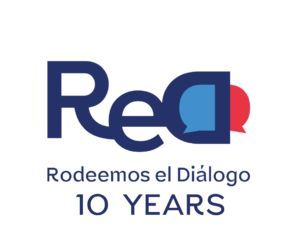Truth Commission Snapshot 19
The Commission’s Final Year
The Truth Commission is entering its final year of activity, during which it must assume the difficult task of producing a final report that incorporates the root causes of the conflict, the principal victimisers, and the invisible stories of resilience and resistance within communities of survivors. There are significant challenges on many fronts. On the one hand, there is a methodological and editorial challenge: which information should be included in the report, and what will remain excluded? Then, there is a political issue centred around how the Commission will deal with the inevitable attacks from particular political sectors that appear in the report’s content. In interviews with commissioner Alejandro Castillejo and analyst Luis Fernando Pacheco, we asked about the Commission’s achievements in 2020, the challenges ahead in the upcoming year and the role that civil society will have in the protection and dissemination of the Commission’s legacy. This snapshot explores these areas.
The Commission’s Achievements in 2020
The Commission was able to continue its work over the course of its second year in action despite the operational challenges. Not only was the investigative work of the Commission impacted by the deaths of two commissioners, but in addition, the onset of the global health emergency brought with it a need to reconsider all state institutional activities. This meant a reinvention of investigatory activities that had not initially been designed for use in a virtual context. Castillejo highlighted the Commission’s quick process of adaptation. Indeed, the circumstances did not require an extension of the Commission’s mandate and the final report for the clarification of the truth is still due to be presented at the end of 2021.
The Final Year of the Commission’s Work
The challenges for the Commission in its final year of work are not limited to the unusual conditions under which it has had to operate over the last few months. The most significant element in the future, according to Castillejo and Pacheco, will be the dissemination of the final report. Both agree that the report should not simply be used for analysis and appropriation by state institutions and academics. Rather, the Commission’s work is underpinned by the prospect of the report and its findings also being socially appropriated by Colombian society. Castillejo offers two elements that could help this process of social appropriation. The first is for the Commission to have a presence within public debate. In this way, it will be able to defend both its legacy and the institutional work behind the final report; this supporting work being a robust narrative, investigatively speaking, albeit neither definitive nor easy to understand. The second element is the role of social organisations to act as “sounding boards” for the dissemination and social appropriation of the report.
Civil Society and the Commission’s Legacy
Both Castillejo and Pacheco agree that the report on its own will not resolve everything. Whatever civil society chooses to do with it will be fundamental. However, dissemination is not straightforward, and Pacheco suggests two priorities that should be taken into account. First, the need to find ways of bringing new audiences to the content produced by the Commission. Second, and arguably most important, is honesty with respect to the report’s content.
Pacheco says that confrontations are inevitable between different sectors of society over the interpretation of the Commission’s legacy. This has been seen in other contexts where there have been truth commissions, such as in Peru. For this reason, he recommends showing as comprehensive a story as possible, highlighting the complexity of many of the actors that cannot be reduced to the commonly used binary categories of good and evil. In his opinion, it is also important to consider some of the positive transformations that have arisen from the violence, such as processes of collective organisation among survivors. These transformations have been some of the most invisible effects of Colombia’s armed conflict. Pacheco also stresses the role that civil society can play in protecting both the tangible and intangible material that victims’ organisations have contributed to the Commission during its three years of work. Some museums have started to preserve this material, but universities and organised collectives could also start doing the same, helping to produce and protect local memories.
Finally, Pacheco and Castillejo suggest that creativity in disseminating the report is key for any organisation that decides to commit to protecting the Commission’s legacy. Beyond the report, there are hundreds of hours of uploaded videos on the Commission’s YouTube channel that are also part of its legacy, and this material should be utilised by those disseminating the Commission’s work as well as by researchers that want to explore the clarification of truth or peacebuilding processes. With this in mind, Castillejo believes that alternative mechanisms could be created in order to achieve dissemination and social appropriation of the report. Alternative approaches using oral and artistic communication have an important role to play in the dissemination process.
Embrace Dialogue understands that, in order for the Commission’s work to be successful, civil society must demonstrate its commitment and solidarity. The final year of the Commission’s work is an opportunity for the emergence of a renewed civil society effort to revalue the significance of truth and justice.


